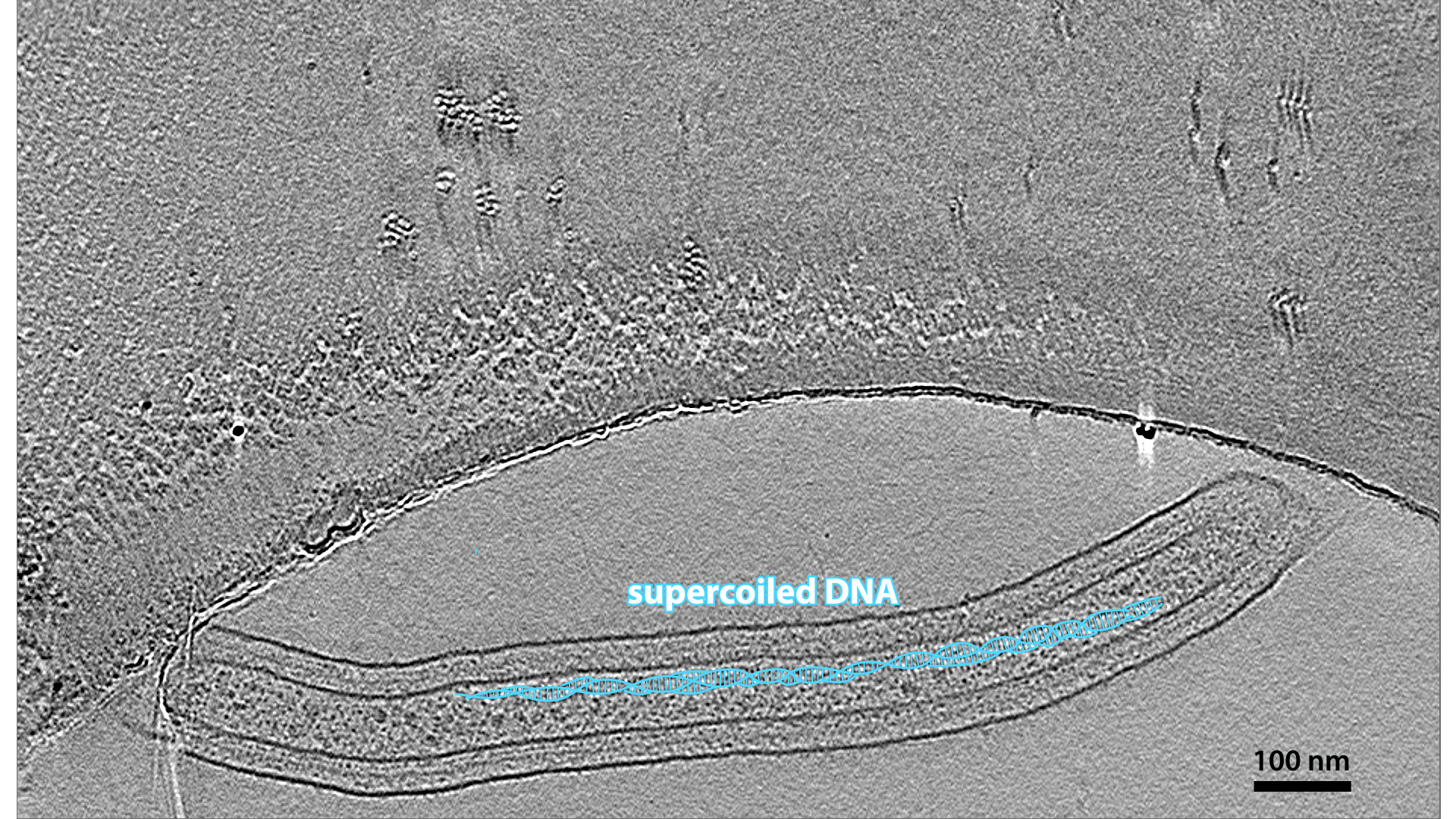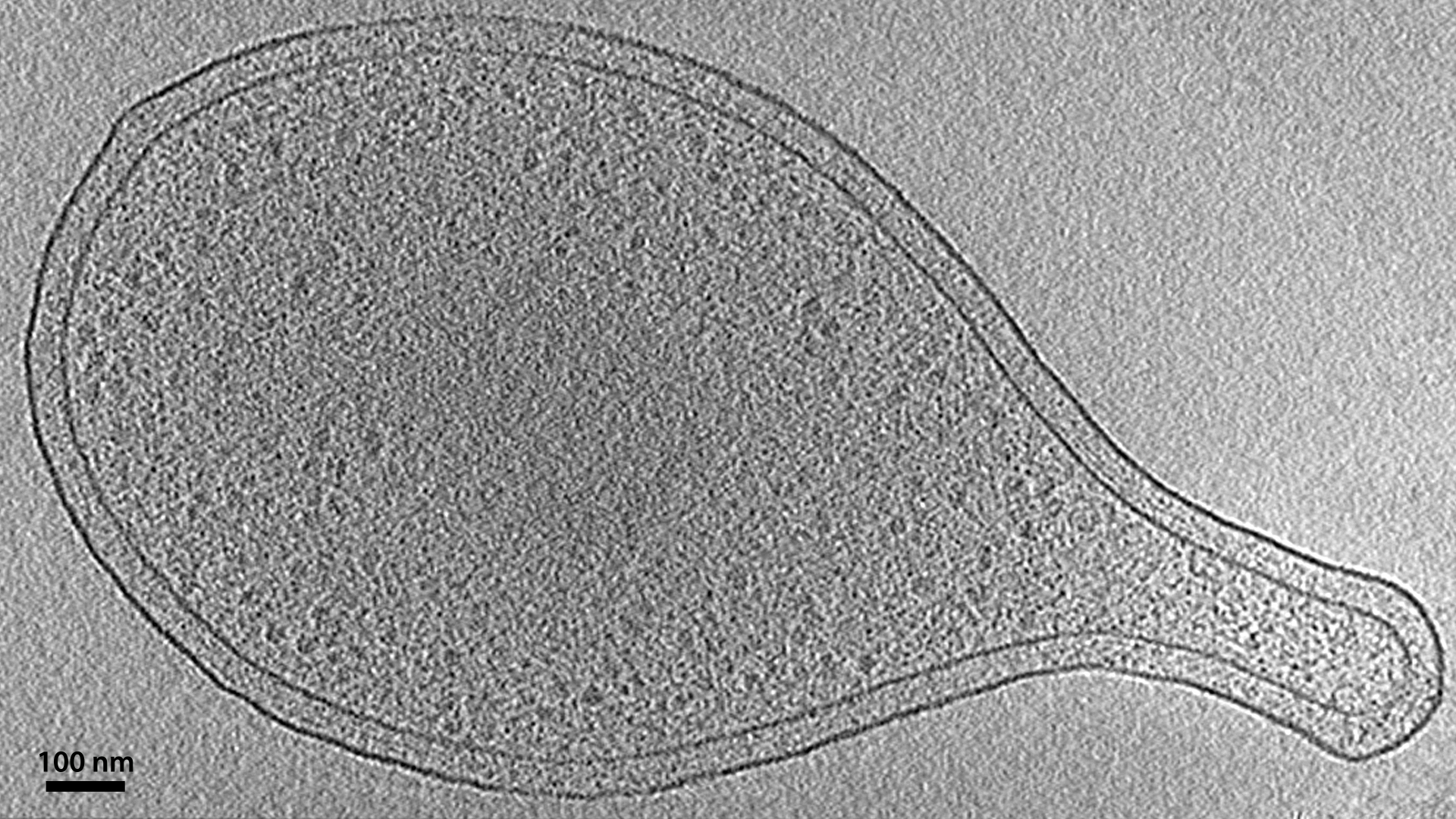Hyphomonas neptunium grow a single stalk from one end of their cell body, similar to the Caulobacter crescentus you saw in Chapter 4.1. The function of the stalk, though, is different in this budding bacterium than in C. crescentus, which divides by more conventional fission.
H. neptunium have evolved a program of stages they pass through in the course of their life. When a newborn cell is released, it is in the “swarmer” stage, using a flagellum (discussed in the next chapter) to swim away in search of a favorable location to settle down, then jettisoning its flagellum and growing a stalk like this with which to make its own bud. Once a cell settles down into the “stalked” stage, it spends the rest of its life sending off buds as long as conditions are good. We will discuss this lifecycle, and its advantages, more in Chapter 8.4.




